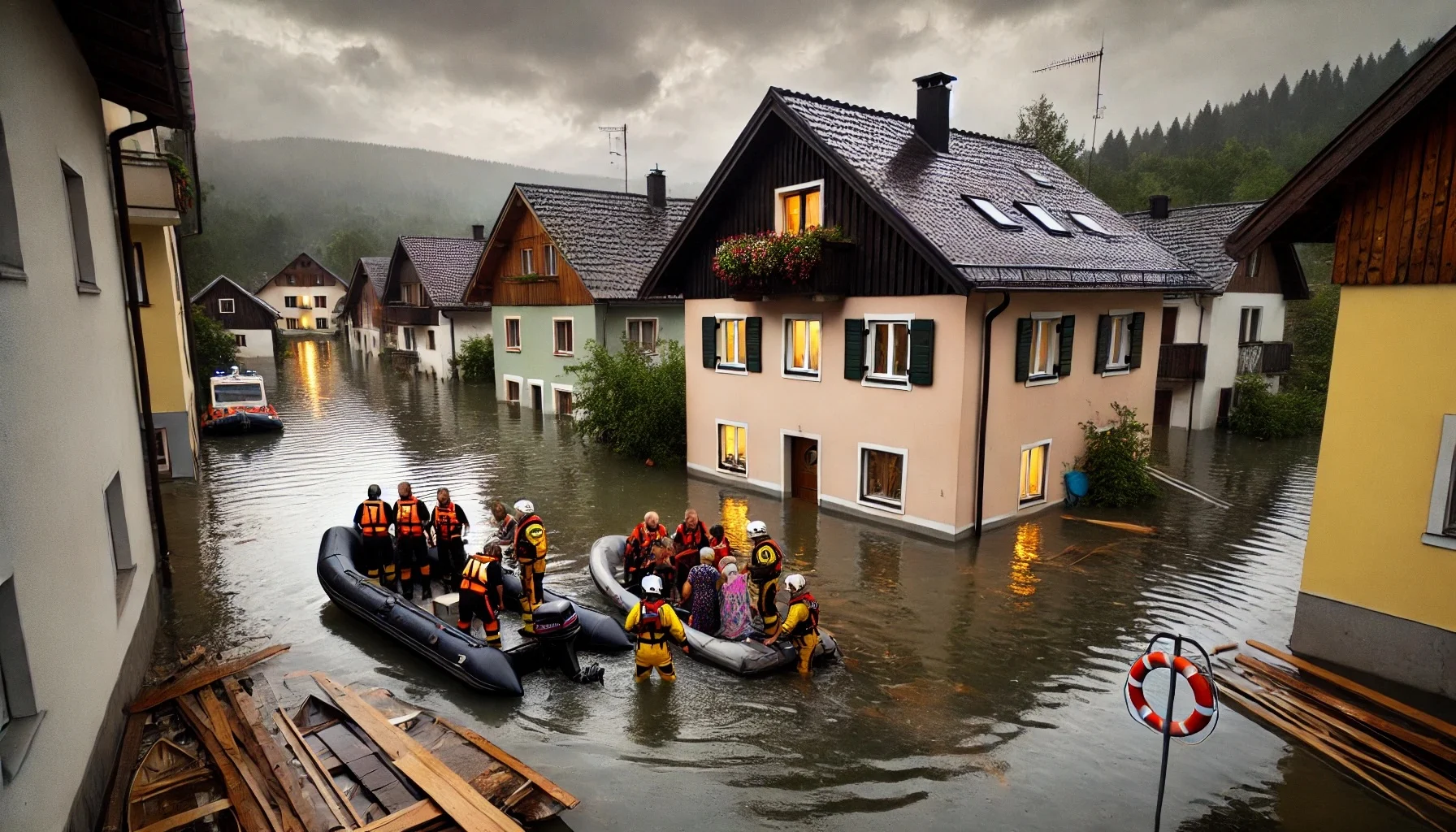
The 2023 Slovenia Floods
by: The Calamity Calendar Team
August 3, 2023
A Day of Torrential Downpour
In the early hours of August 3, 2023, Slovenia awoke to a relentless deluge that would become one of the most devastating natural disasters in its recent history. The nation, already saturated from earlier summer rains, faced an onslaught of rain that meteorologists had warned about but couldn’t fully anticipate. The soil, unable to absorb any more water, led to rivers and streams swelling beyond their banks almost immediately.
The Morning of Chaos
By morning, Slovenia’s major rivers – the Sava, Drava, and Soča – began to rise alarmingly. The rains, far heavier than forecasted, continued without respite. Towns and villages along the riverbanks were the first to experience the devastating impact. Residents in the capital, Ljubljana, and regions like Upper Carniola, Lower Styria, and the Savinja Valley found themselves in the midst of rising waters, with little time to react.
The Afternoon’s Desperate Struggle
As the day progressed, the situation worsened. By midday, floodwaters had breached riverbanks, inundating homes, businesses, and critical infrastructure. Roads and bridges were submerged or washed away, cutting off entire communities. Emergency services were quickly overwhelmed as they conducted urgent evacuations and rescue operations. The scenes were chaotic – people wading through chest-deep water, trying to save what little they could as the waters rose ever higher.
Thanks for subscribing!
A Night of Endurance
The evening brought no relief. Landslides began in hilly and mountainous regions, compounding the disaster. Thousands of residents had to be evacuated, many with only the clothes on their backs. Emergency shelters filled to capacity as people sought refuge from the floodwaters that continued to spread, engulfing everything in their path.
Aftermath: Counting the Cost
The scale of the destruction became apparent in the days that followed. The floods had caused several hundred million dollars in damage. Thousands of homes and businesses were either damaged or destroyed. Key infrastructure such as roads, bridges, and public utilities lay in ruins. Tragically, the floods claimed at least six lives, and many more were injured, some critically.
Economic Devastation
The economic impact was severe. Agriculture, a backbone of Slovenia’s rural economy, suffered massive losses. Fields were submerged, crops destroyed, and livestock lost. The tourism industry, another vital sector, saw significant disruptions. Local businesses faced enormous challenges, from direct damage to disrupted supply chains. The costs of reconstruction and repair were daunting, necessitating international aid and extensive government support.
A Swift and Unified Response
In the immediate aftermath, over 3,000 firefighters, police officers, and members of the Slovenian Armed Forces were mobilized for rescue and relief operations. Thousands of residents were evacuated from high-risk areas, and international aid flowed in, with neighboring countries and the European Union providing crucial assistance. Funds, equipment, and personnel were deployed to support Slovenia’s overwhelmed emergency services.
Recovery and Rebuilding
The Slovenian government quickly announced a comprehensive recovery plan. This plan included rebuilding homes and infrastructure, improving flood defenses, and enhancing early warning systems. As of mid-2024, many communities were still in the process of rebuilding, with a long road ahead to full recovery. Reconstruction efforts were ongoing, with a focus on making the country more resilient to future natural disasters.
Environmental and Policy Implications
The floods also prompted discussions on their long-term environmental impact. Changes to river courses and soil erosion were being studied, and the event intensified debates about climate change. The floods underscored the need for sustainable environmental policies and better disaster preparedness. Enhancing flood forecasting and early warning systems became a priority, alongside updating building regulations to withstand such extreme weather events.
A Call to Action
The Slovenia floods of 2023 served as a stark reminder of the destructive power of nature and the increasing frequency of extreme weather events. As Slovenia rebuilds, there is a collective recognition of the need for greater resilience and adaptation to climate change. The lessons learned from this disaster are driving efforts to better protect communities and mitigate the impacts of future floods, ensuring a safer and more sustainable future for all.
Stay in the Loop!
Become a Calamity Insider and get exclusive Calamity Calendar updates delivered straight to your inbox.
Thanks! You're now subscribed.